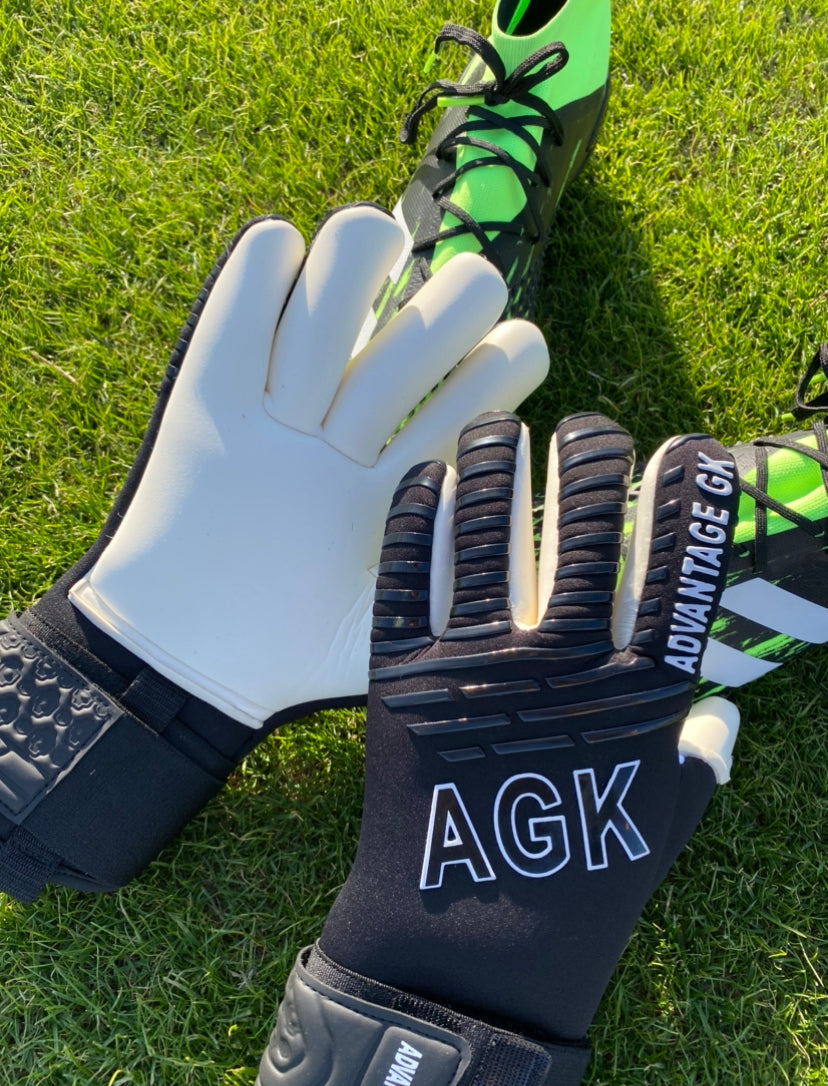
How Long Should Goalkeeper Gloves Last?
Share
How Long Should Goalkeeper Gloves Last?
Hi everyone! In this post, I want to help answer a few of the questions we receive about protecting the palms of your gloves to help them last longer, and therefore, help you save more money.
By the way, if you have other questions or want to see previous posts on topics such as finger saves, click here.
First, Let’s Be Realistic
First things first, it’s essential to remember goalkeeper gloves are not like your other equipment such as shin guards, cleats, goalkeeper kits, etc. I know this seems like a no-brainer, but it’s vital to realize gloves will not last as long as your other soccer gear. So why is this? It’s because your glove’s grip is made of latex which is a soft, porous material. Latex absorbs whatever it comes into contact with, whether water, dirt, sand, turf, dust, and sweat. Regardless of which brand of glove you purchase, this is a universal truth.
How Many Pairs of Goalkeeper Gloves Do You Need?
The average number of gloves a GK goes through per year (not season):
Professional Goalkeepers: 25-35 pairs
College Goalkeepers: 5-8 Pairs
High School Goalkeepers: 3-6 pairs
Youth and Recreational Goalkeepers: 1-2 pairs
Keep in mind the following:
- Professionals train daily and for many hours. They also have the luxury of affording more pairs.
- Goalkeeper gloves can and will last longer if you properly take care of them.
How To Buy Goalkeeper Gloves
It’s important to make sure you buy goalkeeper gloves that match your needs and preferences for fit.
- Top-quality goalkeeper gloves come with plastic on the latex to protect your grip before you need to wear them.
- If you purchase a glove that does not come with plastic on the latex, you are purchasing a mid-range or training quality goalkeeper glove.
- Mid-range goalkeeper gloves and below are ideal for youth and recreational goalkeepers.
- Do not peel the plastic from your goalkeeper gloves latex until you are ready to train and play in them. Once the latex is exposed to oxygen, a slow drying process naturally occurs. This is for all latex and all brands.
- It is important to note that all latex is naturally white and therefore, white latex is the most durable.
- When latex is a color other than white, additives have been introduced to the latex and will soften the latex, which will add to the stickiness but is now slightly less durable than white latex.
- The darker the latex, the more additives, making goalkeeper gloves more prone to wear and break down. It is not a big difference, but it will be noticeable.
- Training is harder, always harder on your goalkeeper gloves. Each training session equates to 3-4 games.
PRO TIP: As you buy new gloves, have them become your game gloves. Wear them in, and then drop them down to your training pair.
Goalkeeper Glove Care
How you care for your gloves goes a long way in protecting them. For example, when finishing a game or training, avoid throwing your gloves in your back and leaving them there until your next training session or game. Do not leave your goalkeeping gloves in really hot or frigid temperatures. Besides the fact that this is not hygienic (and plays a large part in giving gloves that foul odor they’ve become accustomed to), this is terrible for protecting your gloves latex and, therefore, stickiness.
So how should you care for your gloves?
-
Wash your gloves after every 3-4 uses, and be sure to use a glove wash specific to goalkeeper gloves. Follow the directions, and be sure to air dry your gloves. Do NOT use a hairdryer or other sources of heat to dry your gloves. Air dry only.
PRO TIP: Pick one day a week to be “glove wash day”- ex. Thursday after training ahead of weekend games - Store your gloves: Between training/games, store your gloves in a specialized compartment or glove bag - where it isn’t exposed to extreme weather/temperatures OR smells. If your gloves are soaking wet, let them air dry and then store them! Damp, sweaty gloves thrown in a bag promote bacteria growth and stench.
- Dampen (not soak) your gloves before and while playing. A little bit of water activates the latex. Keep a bottle by your goal (use spit as a last-ditch scenario).
- DO NOT, under any circumstances, pour hand sanitizer or other drying agents on your palms. This is pretty much a death sentence for gloves!
Proper Goalkeeping Technique Will Protect Your Gloves
Finally, one of the biggest things you can do as a goalkeeper to protect your goalkeeping gloves is to pay attention to your technique. Simple changes to your technique and style of play can significantly impact the life of your latex and gloves overall. For example, using your fist to push back up off the ground from a dive instead of pushing with your palms. The same holds for a field- dirt, turf; grass can be just as abrasive. It gets both absorbed into the latex and can tear it. Simple changes to technique are often the best way to increase the life of your gloves.
Have questions about glove fit, styles, or care? Reach out through our contact form. We’ll get back to you within 24 hours.
